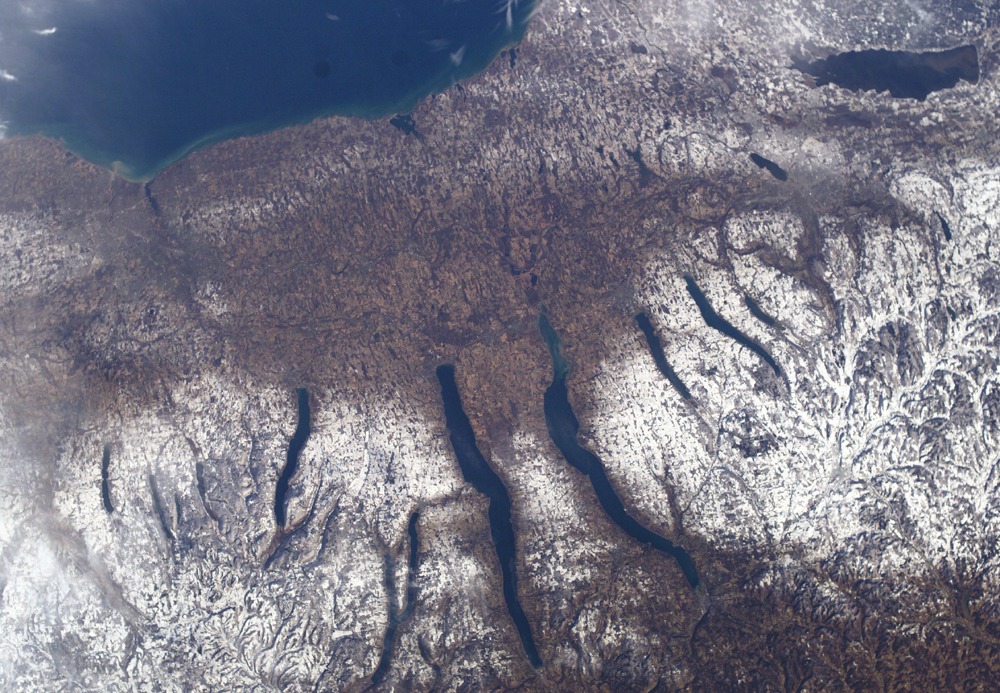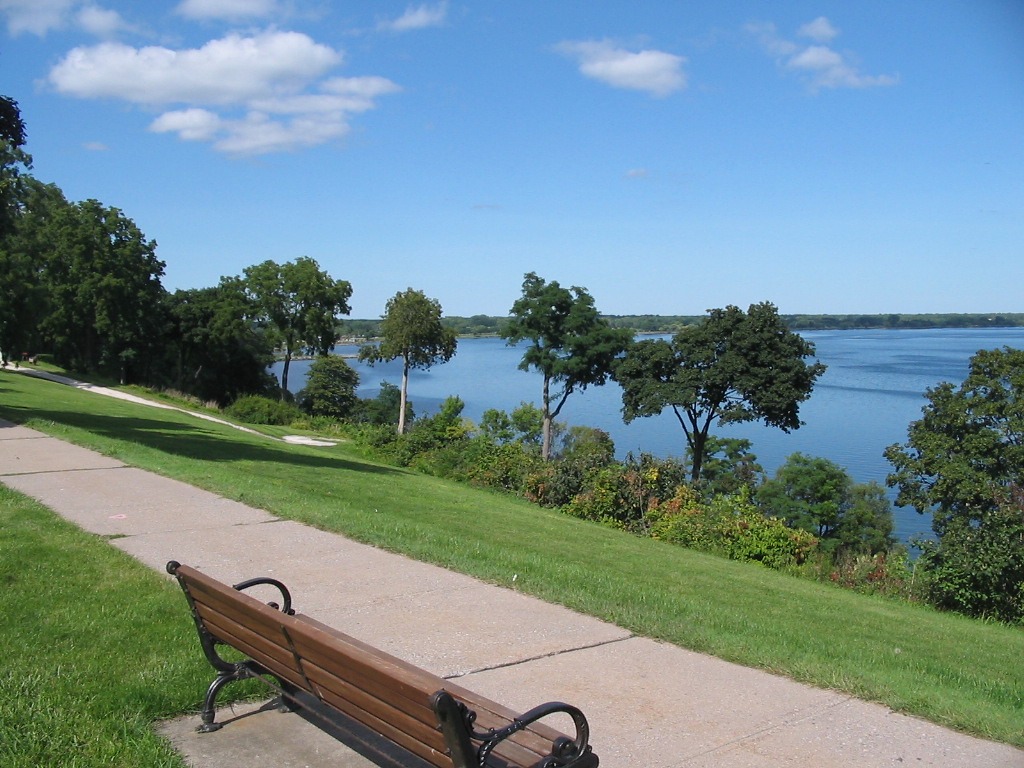The Finger Lakes is a collection of eleven long, narrow, generally north-south lakes located in New York’s Finger Lakes region. This area lies on the border between the Ontario Lowlands ecoregion of the Great Lakes Lowlands and the Finger Lakes Uplands and Gorges ecoregion of the Northern Allegheny Plateau.
While the official name Finger Lakes dates to the late 19th century, the geological phrase “finger lake” refers to a long, narrow lake in an excessively deepened glacier basin. The bottoms of Cayuga and Seneca Lakes, which have respective depths of 435 feet (133 meters) and 618 feet (188 meters) below sea level, are among the deepest in the United States. None of the lakes are wider than 3.5 miles (5.6 km), although Seneca Lake is the longest and has the highest surface area at 66.9 square miles (173 km2). The fabulous history of NYC encompasses beautiful localities with a rich historical and cultural background as well.
A Brief History
The Bluff Point Stoneworks and other pre-Iroquois habitation markers can be found in the Finger Lakes region, but nothing is known about the possible builders of these mysterious constructions. Central to the Iroquois homeland is the Finger Lakes region. The Seneca and Cayuga countries, after whom the two major Finger Lakes are called, are among the Iroquois tribes. From about, the Tuscarora tribe also inhabited the Finger Lakes area. Nearer to their respective namesake lakes, Oneida Lake and Onondaga Lake, the Onondaga and Oneida tribes dwelt on the eastern fringe of the area. The Mohawk were the Iroquois tribe to the east.
Many other tribes relocated to the Finger Lakes area during colonial times in search of the Iroquois’ protection. For instance, the Tutelo-Saponi, a grouping of survivors from multiple Virginia Siouan tribes, relocated to the town of Coreorgonel at the southern end of Cayuga Lake close to modern-day Ithaca in 1753. They remained there until the Sullivan Expedition destroyed their hamlet in 1779.
The Name Origin
Uncertainty surrounds the word Finger Lakes’ etymology. Currently, a United States Geological Survey article by Thomas Chamberlin from 1883 is the earliest known documented use of the term “finger lakes” for this collection of 11 lakes. Later, Finger Lakes was used as a proper name and cited this study. S. Tarr in a paper presented to the Geological Society of America in 1893.
The Pleistocene Ice Age, according to geologists, is when The Finger Lakes originated more than 2 million years ago. The soil and rocks were pushed south by glaciers as they slowly moved through the region and carved out vast valleys. The glaciers and ice slowly melted away, leaving behind water-filled shale valleys that are today’s Finger Lakes.
According to Native American lore, the Great Spirit blessed the area by placing his (or her) hands on it, and as a result, the lakes were created. The “Finger Lakes” name refers to the water-filled impressions that his (or her!) fingers left behind.
The Suffragettes & Women’s Rights
Sometimes little moments lead to great movements. Amelia Jenks Bloomer introduced Susan B. Anthony to Elizabeth Cady Stanton on a spring day in 1851. That encounter sparked a friendship that would last a lifetime and the founding of the Suffragettes, a group that organized protests, put pressure on political parties, and ultimately succeeded in getting the 19th Amendment to the Constitution, which ensures that women have the same legal protections as men, passed.
Corning Glass and Kodak Film
To see how glass and cinema changed the 20th century as much as steel and coal shaped the 19th, big crowds flock to two distinctive museums. The Corning Museum of Glass features exhibits showcasing the manner in which artists have converted glass into lovely items, such as Katherine Gray’s “Forest Glass,” as well as live demonstrations of the process of creating glass (2009). At the Rochester, New York, location of the George Eastman Museum, 900 East Avenue, photography and filmmaking are prominent. The museum organizes still-photography exhibits, film events, and workshops on the technical aspects of the art.
Christianity in the New World
A Dutch Catholic priest named Menno Simons left his order to establish an Anabaptist congregation that would later retain his name in the early 1500s, not long after reformers like Martin Luther, John Calvin, and others departed from the Catholic Church to found Protestant communities of their own. Jacob Ammann, a Swiss church leader who disagreed with how some Christian teaching should be applied, split from the Mennonites in the 1690s to found yet another Anabaptist congregation. His adherents adopted the name Amish.
Early Europeans fled their homelands’ state-mandated religions and officially recognized churches, which frequently persecuted and occasionally executed people who refused to follow authoritarian decrees, for the New World. Baptists, Quakers, and Mennonites arrived later than Puritans, who arrived first. Early American religious tolerance was built on anabaptist beliefs, which greatly influenced how we currently view religious freedom.
A Place of Historic Structure
Glenn Curtiss, an aviation pioneer, was born and raised in Hammondsport, and the region is well-liked by glider pilots due to its favorable air currents. Mark Twain spent his last years living in Elmira, which was also the location of a notorious Civil War jail. The Corning Glass Works and the Corning Museum of Glass are two of Corning’s most well-known residents. For many years, locomotives were serviced in Hornell, which is to the southwest of the Finger Lakes; nowadays, rail passenger cars are still produced there (2022).
The Granger Homestead (1816), a sizable village home in Federal Style in Canandaigua, New York, is noteworthy among the area’s historic structures. The Prouty-Chew House (1829) in Geneva is another example of the Federal Style, with parts of it updated throughout time to fit changing trends.
The Richard DeZeng House, built in Skaneateles in 1839, Rose Hill, built in Geneva in 1839, and Esperanza, built in Penn Yan in 1839, are three Greek Revival homes close to three lakes (1838).
A Home of the Bald Eagle
According to the New York State Department of Environmental Conservation (DEC), the state of New York had 388 bald eagle territories. But just fifty years ago, there was only one pair of bald eagles in the entire state, and they nested near the southern end of Hemlock Lake in Livingston County. Thomas J. Rauber of Dansville, an amateur naturalist, made the discovery of the aerie. His observations and investigation led him to the conclusion that the DDT poisoning, which compromised their eggshells and resulted in the eggs breaking during incubation, was directly responsible for their inability to procreate. The rigorous DEC bald eagle restoration campaign that resulted from that finding is regarded as one of the best examples of wildlife protection in American history. The oldest bald eagle nesting location in the state, which dates to the early 1960s, is located near Hemlock Lake. Bald eagles have returned to New York State in large numbers of thanks to the breeding birds of Hemlock Lake.
A Wine Producing Region
In contrast to the busy gest of Brooklyn with its interesting history, the Finger Lakes is an outdoor and cultural paradise with extensive hiking trails, hundreds of wineries, fascinating historical sites, and breathtaking gorges. The largest wine-producing region in New York is the Finger Lakes region. Around Seneca, Cayuga, Canandaigua, Keuka, Conesus, and Hemlock Lakes, there are over 400 wineries and vineyards. The deep lakes create a lake appearance for the luxuriant vineyards that line their sides. The area preserves winter’s cold and spring’s cold because of the magnitude and concentration of these lakes, which prevents the grapes from being destroyed by disastrous spring frost during shoot growth and early frost before harvest. The slopes on the east and west side of the Finger Lakes also provide for variations in sunlight exposure, temperature, soil, and more due to their long, narrow, north-to-south positioning. This results in a great diversity of growing environments within the region, and ultimately in the yielded wine.
Many wineries are now open to tourists because of the 1976 Farm Winery Act. Wineries contribute to the prosperity of the local economy by producing wine and drawing tourists. Two of the country’s oldest wineries, O-Neh-Da Vineyard (1872) on Hemlock Lake and The Pleasant Valley Wine Company (1860) on Keuka Lake, are in the Finger Lakes American Viticulture Area (AVA).


